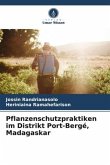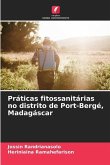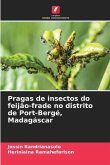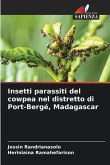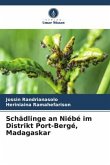Cowpea occupies over 70% of the area cultivated in the baiboho of Port-Bergé. At present, this crop is subject to attacks by insect pests, leading farmers to use pesticides intensively and abusively. The aim of this study is to inventory insect pests of cowpea in the baiboho of Port-Bergé. Farmers were surveyed to identify the main pests. Sight hunting followed by manual collection, the quadra method and mowing nets were used to inventory and capture pests at each phenological stage of the plant. Documentation and caterpillar rearing were carried out to identify the species collected. The results obtained identified 8 different insect pest species. Aphis craccivora (Aphidideae), Heliothis armigera (Noctuideae), Maruca vitrata (Crambideae) and Clavigralla tomentosicollis (Coreideae) are the most formidable to cowpea cultivation. In terms of abundance, Aphidideae (Aphis craccivora) and Agromyzideae (Ophiomia phaseoli) predominate at all phenological stages of the plant.
Hinweis: Dieser Artikel kann nur an eine deutsche Lieferadresse ausgeliefert werden.
Hinweis: Dieser Artikel kann nur an eine deutsche Lieferadresse ausgeliefert werden.


